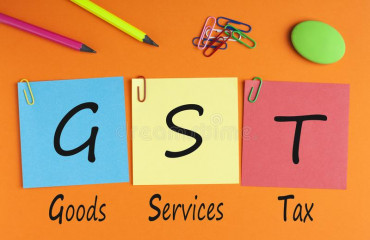
The goods and services tax (GST), which recently completed eight years in India, was originally envisioned as a “good and simple tax." However, over time, it has become increasingly complex. While a national GST would have been an ideal value added tax (VAT) system, the imperatives of a federal structure led to a compromise, resulting in a dual GST system comprising Central GST (CGST), State GST (SGST) and Integrated GST (IGST).
The goods and services tax (GST), which recently completed eight years in India, was originally envisioned as a "good and simple tax." However, over time, it has become increasingly complex. While a national GST would have been an ideal value added tax (VAT) system, the imperatives of a federal structure led to a compromise, resulting in a dual GST system comprising Central GST (CGST), State GST (SGST) and Integrated GST (IGST).
Under this system, the Centre and state governments have concurrent authority to tax the consumption of goods and services based on the principle of incidence at destination, in contrast with the previous indirect tax regime, which followed an origin-based taxation approach.
Also Read: Ajit Ranade: A progressive GST is easier to promise than achieve
While the uniformity of SGST laws across states has reduced compliance complexities compared to the VAT regime, challenges remain. Businesses with a pan-India presence still need multiple SGST registrations and must manage compliance separately for each state, including GST payments and return filings. This fragmented approach retains some of the administrative burdens of the VAT era despite the procedural standardization.
Compliance burden: The Indian GST framework, often referred to as a 'one nation, one tax' system, has unified tax rates across states and Union territories (UTs), eliminating other taxes on goods and services under its scope. While this standardization simplifies the tax structure, businesses that operate across multiple states or UTs, as mentioned above, are required to obtain separate GST Identification Numbers (GSTINs) for each state or UT and file individual GST returns by using separate usernames and passwords for each jurisdiction.
This has led to complex compliance procedures and a notable increase in related costs, especially due to the extensive reconciliations needed on a monthly and annual basis.
Also Read: How India's GST revenues can sustain their incline
On another front, the central government is working to address inter-governmental settlement issues related to IGST. Between April and July 2024, excess IGST allocations amounting to ₹10,659 crore were made to certain states.
To resolve this, an internal committee has been set up that is chaired by the additional secretary of revenue at the Centre and comprises officials from both state and central governments. This panel aims to review the IGST mechanism and develop strategies for recovering these excess transfers. These developments highlight the operational complexities and financial implications associated with the implementation of GST, despite its overarching goal of creating a unified tax system.
E-invoicing: The GST compliance process is largely digitized, with e-invoicing now mandatory for all business-to-business (B2B) transactions for taxpayers with an annual turnover exceeding ₹5 crore. There are plans to extend this requirement to all taxpayers and eventually to business-to-consumer (B2C) transactions. Once fully implemented, e-way bills should be eliminated. This move would significantly reduce the compliance burden for taxpayers and streamline operations, leading to faster turnaround times for transport vehicles and improved efficiency in the supply chain.
Also Read: Mint Quick Edit | India's GST peak is reassuring
PAN 2.0: The Union government recently unveiled plans to introduce PAN 2.0, an upgraded version of the longstanding Permanent Account Number system used by the Income Tax department as a unique taxpayer identifier.
PAN 2.0 aims to modernize and streamline operations for businesses and citizens alike. The revamped system will leverage advanced technology to enhance efficiency, integrate PAN as a single identifier for specified business activities and introduce a unified portal for all PAN-related services.
This presents an ideal opportunity to design a single GSTIN for taxpayers operating across India. Under this system, tax allocation can occur seamlessly at the back-end, using place-of-supply rules and data captured through e-invoicing.
Such a framework would eliminate the need for an integrated GST administration across levels of governments under the GST Council. Since transaction-wise granular data would be available, GST revenues can be allocated equally between the Centre and states—and, on a destination-based principle, between states.
Also Read: Simplify India's GST regime: The case for it is clear and it's time to act
In this context, lessons can be learnt from the experience of other federal countries such as the United Arab Emirates (UAE), where a single VAT registration number is used for operations across all its constituent emirates. In the UAE, a unified VAT applies to intra-emirate, inter-emirate and import transactions without the need for separate registration in each emirate.
India's next GST Council meeting should discuss this crucial aspect as well, since taking such simplification steps for GST compliance could significantly ease operational challenges for businesses and reduce administrative overheads, thus fostering economic growth by creating a more efficient and business-friendly tax regime.
